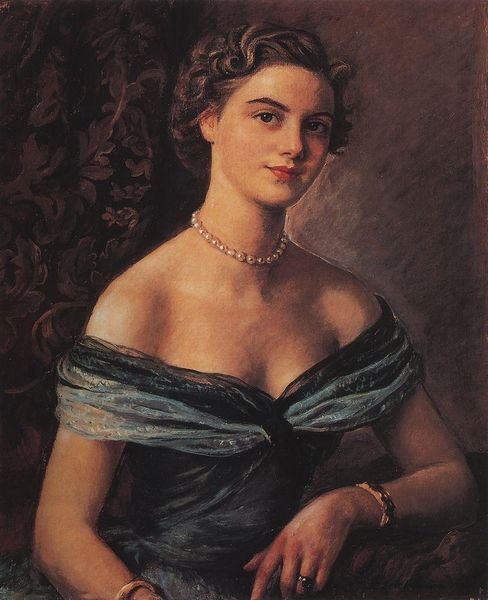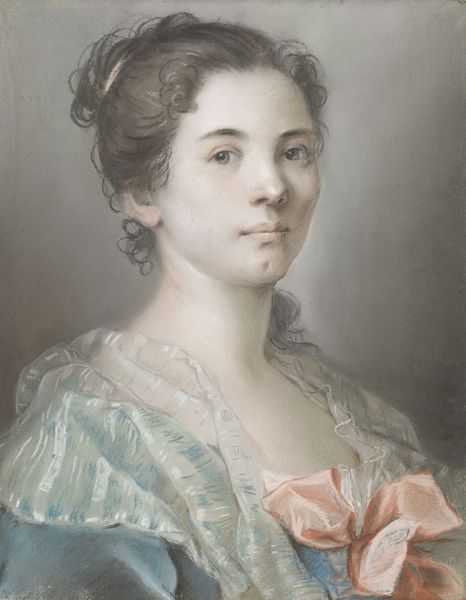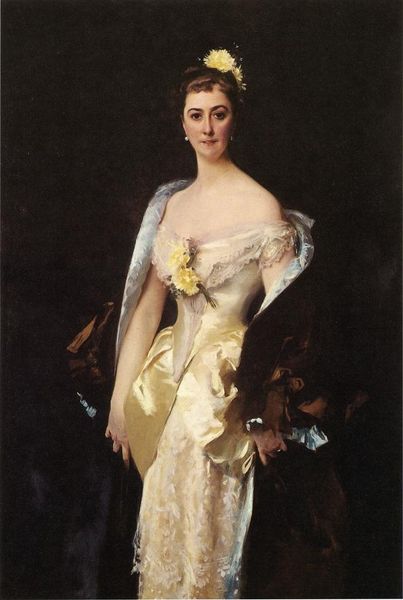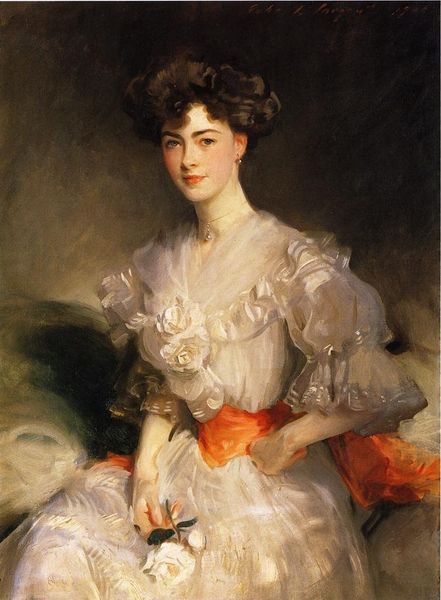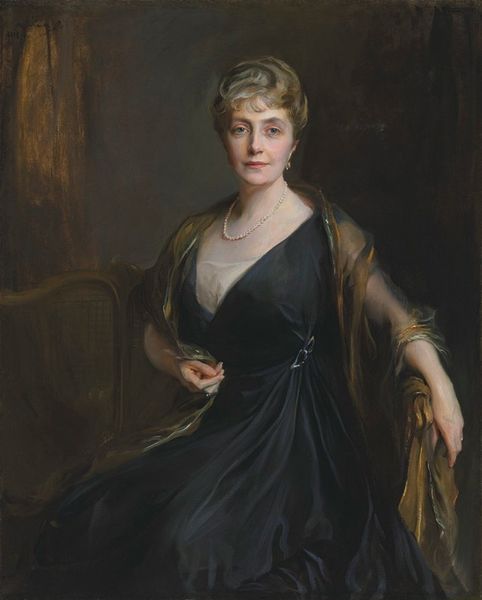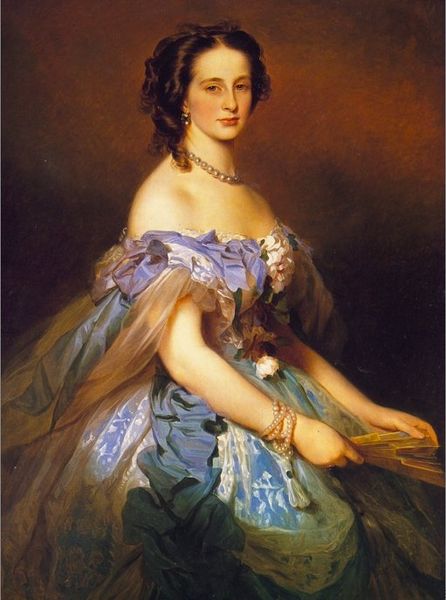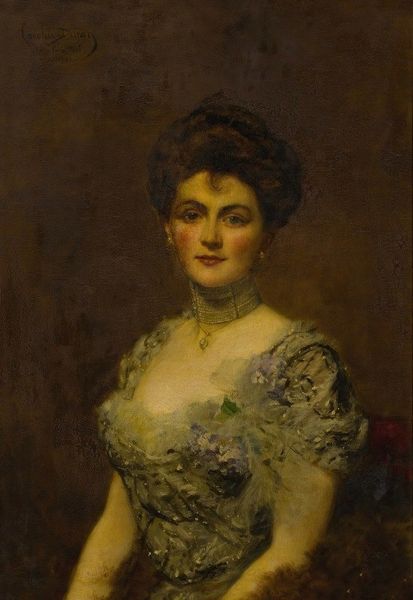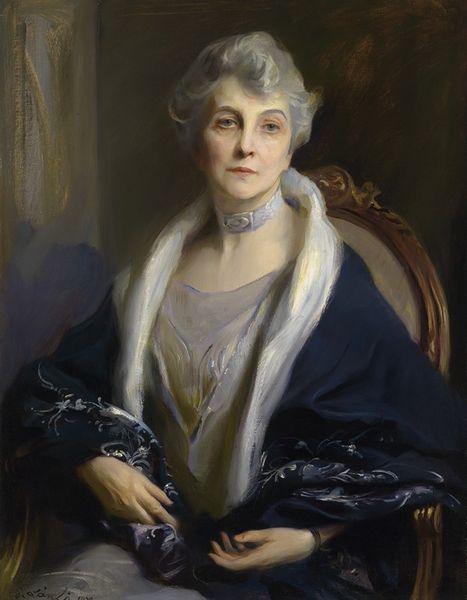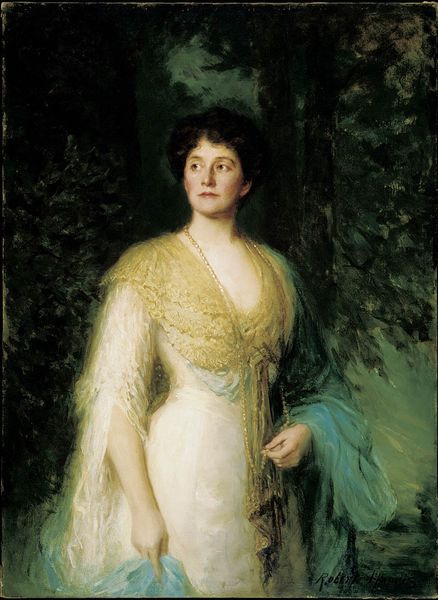
painting, impasto
#
painting
#
impasto
#
academic-art
#
realism
Copyright: Public domain
Editor: Here we have Albert Lynch's "Portrait of a Woman in Blue" from 1912. The delicate impasto work makes the woman almost seem to shimmer. How do you read the formal elements within this composition? Curator: The immediate emphasis, of course, lies in the portrait's chromatic arrangement. Note the triad formed by the blue dress, the subtle, muted earth tones in the background, and the deliberate counterpoint offered by the singular red flower. This generates a contained but impactful dynamic. Do you perceive the subtle lines that Lynch employs? Editor: Yes, I see the fine brushstrokes, particularly how they define the contours of her face and dress, and almost blend to blur around her shawl. It's a soft, romanticized style of Realism, isn't it? Curator: Precisely. Look closer, though, and consider the internal structure. Notice how the linear arrangement of her body creates a subtly diagonal axis within the pictorial space. This challenges the symmetry we often see in portraiture and adds to its elegance. How might that impact the semiotic weight? Editor: That's interesting; it does create a more active composition than I initially realized. The slight tilt of her head along that axis brings more dynamism to her expression too. I guess the simplicity is deceptive. Curator: Indeed. The material arrangement, and linear organization together yield an intricate set of relational dynamics, culminating in a rather complex composition. A very thorough orchestration of its aesthetic elements. Editor: Thank you! It’s fascinating to unpack how those small artistic choices really shape the overall impression. Curator: An absolute pleasure; contemplating these intrinsic aspects has given me cause for renewed appreciation.
Comments
No comments
Be the first to comment and join the conversation on the ultimate creative platform.
